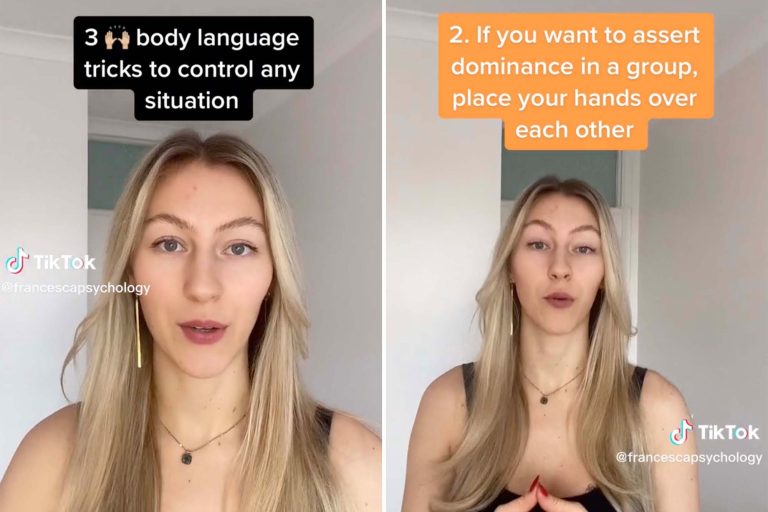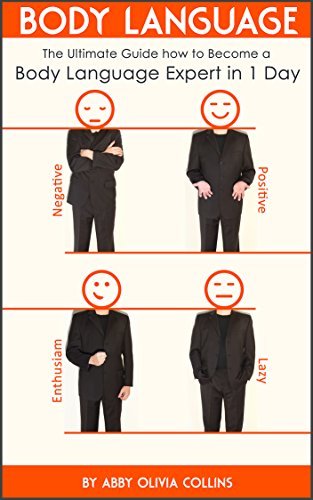Body Language In Conversation
Are you curious about how body language can impact your conversations? Well, you’re in the right place! In this article, we’ll dive into the fascinating world of body language in conversation. So, let’s get started and uncover the secrets hidden in the way we move and gesture while we talk.
Have you ever wondered why sometimes words are not enough to convey our true feelings? That’s where body language comes into play. It’s like a silent language that speaks volumes about our thoughts, emotions, and intentions. From the way we stand, to the gestures we make, and even the expressions on our faces, our body language can define how effectively we communicate with others.
But why is body language so important in conversations? Well, picture this: you’re having a conversation with a close friend, and as they speak, their arms are crossed tightly across their chest. What does that tell you? Most likely, they’re feeling defensive or closed off. Understanding these subtle signals can help us better interpret the true meaning behind someone’s words, allowing us to establish deeper connections and avoid misunderstandings.
So, whether you want to improve your communication skills, ace that job interview, or simply become a better listener, understanding and leveraging body language in conversation is an invaluable tool. Get ready to unravel the mysteries hidden in every gesture and unleash your true conversational potential!
Want to improve your communication skills? Learn how to master body language in conversations with these expert tips! Non-verbal cues can speak volumes and greatly impact the outcome of your interactions. Here’s how:
- Maintain eye contact to show attentiveness
- Use open body posture to appear approachable
- Pay attention to facial expressions for emotional cues
- Gesture naturally to enhance your message
- Match the tone and pace of speech to establish rapport
By incorporating these techniques, you’ll be able to convey confidence, empathy, and understanding in any conversation!

Understanding Body Language in Conversation: The Power of Nonverbal Communication
In today’s fast-paced world, effective communication is more crucial than ever. While we often focus on what we say in a conversation, studies show that the majority of our communication actually occurs through body language. Understanding and interpreting nonverbal cues can provide valuable insights into a person’s thoughts, feelings, and intentions. In this article, we delve into the intricacies of body language in conversation, uncovering its significance and offering practical tips to enhance your communication skills.
The Key Elements of Body Language in Conversation
Body language encompasses various aspects, each revealing hidden messages and emotions that go beyond words. Let’s explore the key elements of body language that shape communication during a conversation.
Facial Expressions: The Window to Our Emotions
Our faces are incredibly expressive, reflecting our true emotions and giving away subtle cues even when we try to conceal them. From a smile that conveys warmth and friendliness to raised eyebrows indicating surprise or curiosity, our facial expressions often reveal more than our words. Observing the micro-expressions in someone’s face can provide valuable clues about their true feelings, helping us navigate conversations more effectively.
Gestures: Adding Emphasis and Clarity
Gestures play a vital role in accentuating our words and adding clarity to our messages. They can range from simple hand movements to more complex gestures using our arms and the rest of our body. Proper use of gestures can enhance the impact of our communication, making it more engaging and memorable. However, it’s important to note that different cultures may have varied interpretations of certain gestures, so it’s crucial to be mindful of cultural norms when communicating across diverse backgrounds.
Posture: The Foundation of Communication
Our posture not only affects our physical health but also conveys powerful messages in a conversation. The way we stand, sit, or hold ourselves can influence how others perceive us and impacts the dynamics of the interaction. Standing tall with an open posture communicates confidence and approachability, while slouching or crossed arms might indicate defensiveness or disinterest. Being aware of and actively managing our posture can significantly improve our communication skills.
Eye Contact: The Connection Catalyst
One of the most powerful aspects of body language in conversation is eye contact. Looking someone in the eye conveys attention, respect, and engagement, fostering a deeper connection. Avoiding eye contact, on the other hand, can be interpreted as disinterest, dishonesty, or lack of confidence. Striking the right balance between maintaining eye contact and not making the other person uncomfortable is essential for effective communication.
Tone of Voice: The Hidden Messenger
While not directly a part of body language, the tone of voice plays a crucial role in conveying emotions and intentions during a conversation. Tone inflections, volume, and pacing can significantly influence the meaning of our words. A warm and gentle tone conveys empathy and understanding, while a sharp and harsh tone may induce defensiveness or hostility. Mastering our tone of voice allows us to communicate more effectively and ensures our message is received as intended.
Personal Space: Respecting Boundaries
The concept of personal space plays a significant role in body language during a conversation. Different individuals have varied comfort levels with physical proximity, and respecting those boundaries is essential for creating a safe and comfortable environment. Invading someone’s personal space can make them feel uncomfortable or threatened, whereas maintaining an appropriate distance promotes open and respectful communication.
Microexpressions: Reading the Subtle Signs
Microexpressions, fleeting facial expressions that last only a fraction of a second, provide valuable glimpses into a person’s true emotions. These involuntary responses can betray hidden thoughts or feelings, allowing astute observers to gather insights that may not be explicitly expressed. However, accurately identifying and interpreting microexpressions requires practice and keen observation skills.
Conclusions can provide valuable insights into a person’s thoughts, feelings, and intentions. In this article, we delve into the intricacies of body language in conversation, uncovering its significance and offering practical tips to enhance your communication skills.
The Benefits of Understanding Body Language in Conversation
Understanding and leveraging body language in conversation can offer a multitude of benefits. Here are some of the key advantages:
Improved Communication
When we are attuned to body language cues, we can better understand the underlying messages being conveyed. This enables us to have more meaningful and effective conversations, fostering stronger connections and resolving conflicts more successfully.
Enhanced Emotional Intelligence
Body language is closely linked to emotional intelligence, the ability to recognize, understand, and manage our own emotions and those of others. By honing our skills in interpreting nonverbal cues, we develop a heightened sense of empathy and emotional awareness, enabling us to navigate social interactions with greater ease.
Building Trust and Rapport
A study by Albert Mehrabian, a pioneer in nonverbal communication research, revealed that words contribute only 7% to the overall impact of a message, while tone of voice accounts for 38% and body language for 55%. By being more mindful of our own body language and tuning into others’, we can build trust and rapport, creating a more positive and harmonious atmosphere in our interactions.
Conflict Resolution
Miscommunication is often at the root of conflicts. Understanding body language can help us accurately decode the underlying emotions and intentions, reducing the chances of misunderstandings and allowing for more effective conflict resolution.
Improved Leadership Skills
Leaders who are adept at reading and utilizing body language have a distinct advantage in inspiring and motivating their teams. By gauging the nonverbal cues of their subordinates, leaders can adjust their approach and communication style, fostering a more inclusive and empowering work environment.
Enhanced Personal Relationships
Body language plays a crucial role in the formation and maintenance of personal relationships. By being attuned to the nonverbal cues of our loved ones, we can deepen our connections, resolve conflicts, and cultivate more fulfilling relationships.
Increased Charisma and Influence
Mastering body language can significantly enhance our charisma and influence. When we project confidence, authenticity, and empathy through our nonverbal cues, we captivate and engage others, making us more persuasive communicators.
Improved Professional Networking
In professional settings, body language plays a crucial role in making a positive first impression and establishing meaningful connections. By conveying approachability, confidence, and active listening through our body language, we can make lasting impressions and build fruitful professional relationships.
Tips for Enhancing Body Language in Conversation
Now that we understand the importance of body language in conversation, let’s explore some practical tips to enhance our nonverbal communication skills:
1. Observe and Learn
Become a keen observer of body language by paying attention to the nonverbal cues of those around you. Notice patterns and correlations between body language and emotions or intentions to develop a more intuitive understanding of nonverbal communication.
2. Be Mindful of Your Own Body Language
Take inventory of your own body language and be aware of the messages you’re conveying. Practice open and confident posture, maintain appropriate eye contact, and be mindful of the gestures you use to ensure your body language aligns with your words.
3. Mirror and Match
Mirroring and matching the body language of the person you’re conversing with can create a sense of rapport and connection. Subtly imitate their gestures, posture, and tone of voice to establish a harmonious and comfortable interaction.
4. Use Gestures Purposefully
Strategically use gestures to emphasize key points and enhance clarity in your communication. Be deliberate in your movements to ensure they enhance your message rather than distract from it.
5. Maintain Eye Contact
Engage in sustained and consistent eye contact with the person you’re speaking to. This conveys attentiveness, respect, and interest, fostering a deeper connection and facilitating better understanding.
6. Practice Active Listening
Active listening involves not only listening to the words being spoken but also paying attention to nonverbal cues. Show genuine interest and engagement by nodding, smiling, and using appropriate facial expressions to encourage open and honest communication.
7. Adapt to Cultural Norms
Be mindful of cultural differences in body language and adjust your communication style accordingly. What may be considered appropriate in one culture might be perceived differently in another.
8. Relax and Breathe
Maintaining a relaxed and calm demeanor can positively impact your body language. Take deep breaths, consciously release tension, and be present in the conversation to project confidence and ease.
9. Seek Feedback
Ask for feedback from trusted friends, colleagues, or mentors to gain insights into how your body language is perceived. Their input can help you identify areas for improvement and refine your nonverbal communication skills.
10. Practice and Repeat
Like any skill, mastering body language requires practice. Take every opportunity to engage in conversations and focus on consciously implementing the tips mentioned above. Over time, your nonverbal communication skills will improve, leading to more successful and impactful interactions.
Body Language in Conversations: Mastering the Unspoken Art
Breaking Barriers Through Body Language
Our bodies are powerful tools for communication, capable of expressing feelings and intentions that words alone cannot capture. By mastering the art of body language in conversation, we can forge deeper connections, resolve conflicts, and create more meaningful interactions. Remember, effective communication is a dance between words and nonverbal cues, and by becoming more attuned to the unspoken language, we can truly elevate our communication skills to new heights. So, let’s embrace the power of body language and embark on a journey of impactful conversations.
Key Takeaways: Body Language in Conversation
- Pay attention to someone’s posture – it can reveal their level of interest.
- Eye contact shows engagement, but be mindful of cultural differences.
- Gestures can enhance communication, but avoid excessive fidgeting.
- Smiling and nodding can indicate agreement and active listening.
- Be aware of personal space and respect boundaries during conversations.
Frequently Asked Questions
In conversations, body language can play a crucial role in conveying messages and establishing connections with others. Here are some common questions about body language in conversation:
1. How can body language affect conversation?
Body language can significantly impact how a conversation is perceived and understood. Nonverbal cues such as gestures, facial expressions, and posture can convey emotions, attitudes, and intentions. For example, maintaining eye contact demonstrates attentiveness and interest, while crossed arms may indicate defensiveness or disengagement. Being aware of your body language and understanding its impact can enhance communication and build stronger connections with others.
Additionally, certain body language signs, such as leaning forward and nodding, can signify engagement and encouragement, making the other person feel valued and understood. Conversely, poor body language like fidgeting or avoiding eye contact can signal disinterest or discomfort, hindering the flow of conversation. Being mindful of your nonverbal cues and adapting them to match the context can lead to more effective communication and create a positive atmosphere.
2. How can I use body language to show active listening?
Active listening is essential for effective communication, and body language plays a crucial role in conveying this engagement. To show active listening through body language, maintain eye contact with the speaker, nod in agreement or understanding, and use facial expressions that reflect interest or empathy, such as smiling or raising your eyebrows. These nonverbal cues demonstrate that you are attentive and present in the conversation, encouraging the speaker to continue and feel heard.
Leaning slightly forward and facing the speaker directly can also signal your interest and engagement. Open body posture, such as keeping your arms uncrossed and relaxed, can indicate receptiveness and approachability. Avoid distracting or fidgeting movements and focus on the speaker’s words, responding appropriately to their cues. By using positive body language that supports active listening, you can foster better understanding and connection in your conversations.
3. What are some body language cues that indicate discomfort or defensiveness in a conversation?
During a conversation, certain body language cues can indicate that a person is feeling uncomfortable or defensive. Crossed arms, a closed-off posture, or leaning away from the speaker can suggest a defensive stance or disagreement. Avoiding eye contact, fidgeting, or touching one’s face or neck can also indicate discomfort or unease.
Facial expressions such as a furrowed brow, tightened lips, or a lowered head may also suggest negative emotions. Additionally, an increase in the speed or volume of speech, coupled with a tense body posture, can indicate defensiveness. It’s important to recognize these signs in others and adjust your approach to create a more comfortable and open environment for conversation.
4. Can body language help in resolving conflicts during conversations?
Yes, body language plays a significant role in resolving conflicts during conversations. Nonverbal cues such as maintaining eye contact, using open and relaxed body posture, and mirroring the other person’s gestures can foster a sense of empathy and understanding, facilitating conflict resolution.
Active listening through positive body language, such as nodding, reflecting the speaker’s emotions through facial expressions, and displaying a calm demeanor, can help de-escalate tense situations. It signals to the other person that you are open to finding common ground and are genuinely interested in resolving the conflict. Being mindful of your own body language and encouraging the use of positive nonverbal cues can contribute to more constructive and productive conversations, leading to effective conflict resolution.
5. How can I improve my own body language in conversations?
Improving your body language in conversations begins with self-awareness. Pay attention to your own nonverbal cues and observe how they might affect your interactions with others. Start by practicing open and relaxed body posture, maintaining good eye contact, and using appropriate facial expressions that reflect your engagement and emotions.
Focus on developing active listening skills, which include using nonverbal cues to show understanding and interest. Practice mirroring the other person’s body language to establish rapport and create a sense of connection. Additionally, being aware of cultural differences in body language can help you navigate conversations with individuals from diverse backgrounds.
Lastly, seek feedback from trusted individuals who can provide insights on how your body language may impact your conversations. Continuously working on improving your body language and its alignment with verbal communication can enhance your ability to connect with others and have more meaningful conversations.
Why Body Language Matters | How to Have Better Conversations
Summary
Body language is important in conversations. It includes facial expressions, gestures, and posture. These nonverbal cues affect how others perceive us and can help us understand what someone is really saying. Maintaining eye contact shows active listening, while crossing arms may signal defensiveness. Paying attention to these cues can improve communication and build better connections with others.

